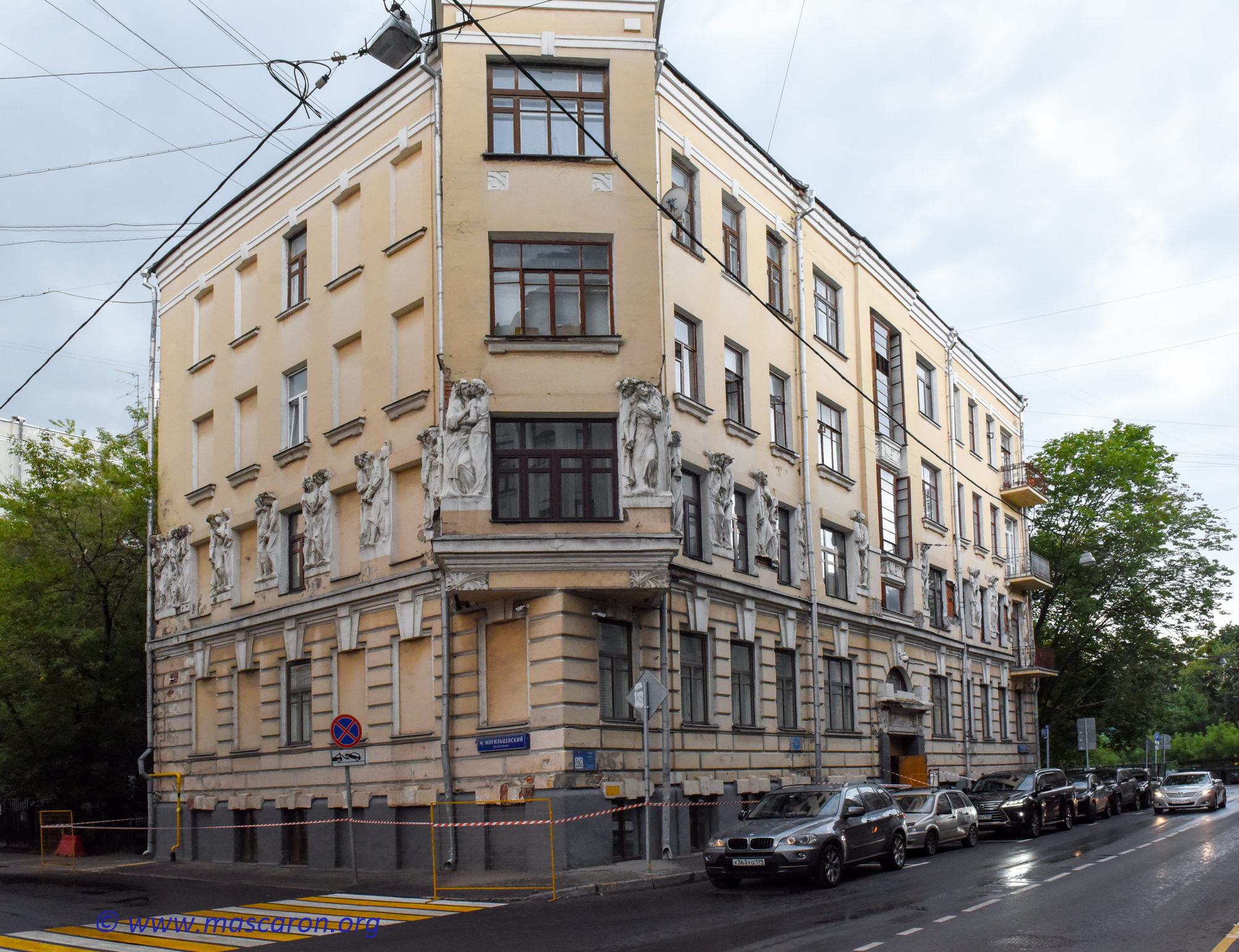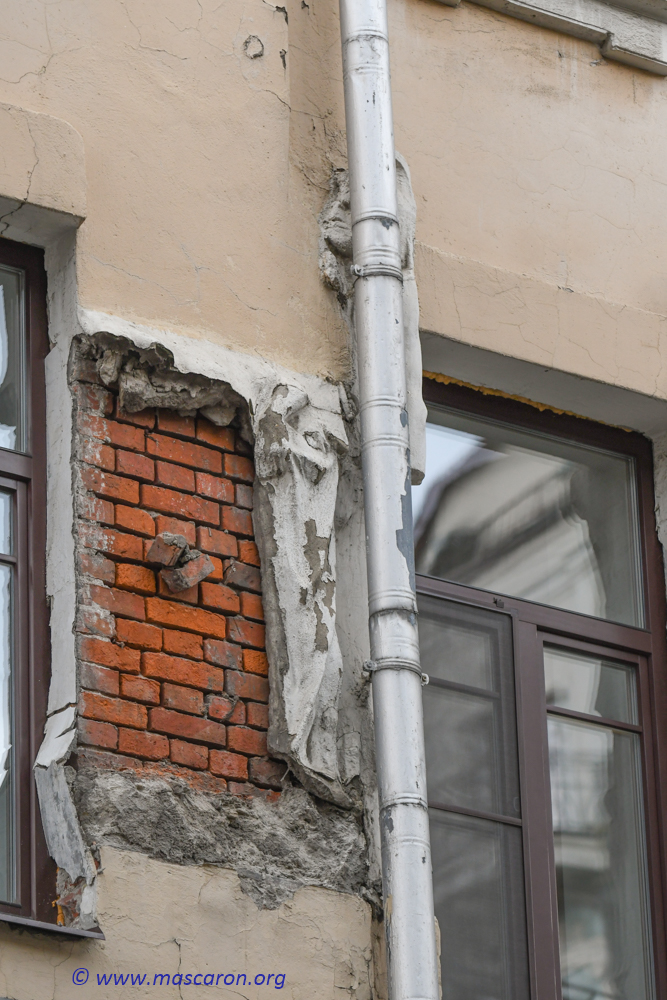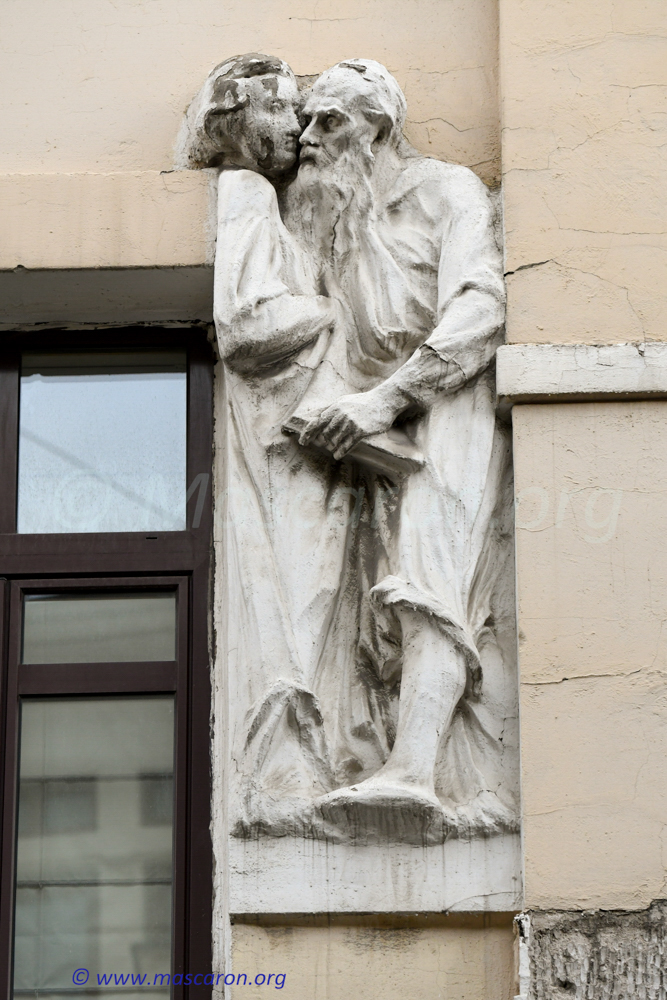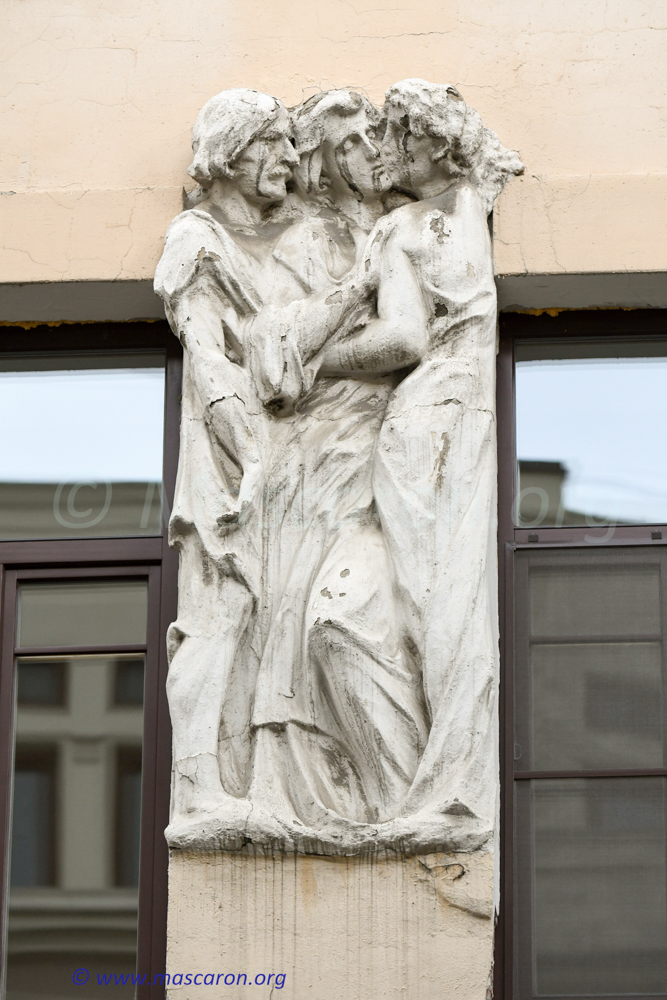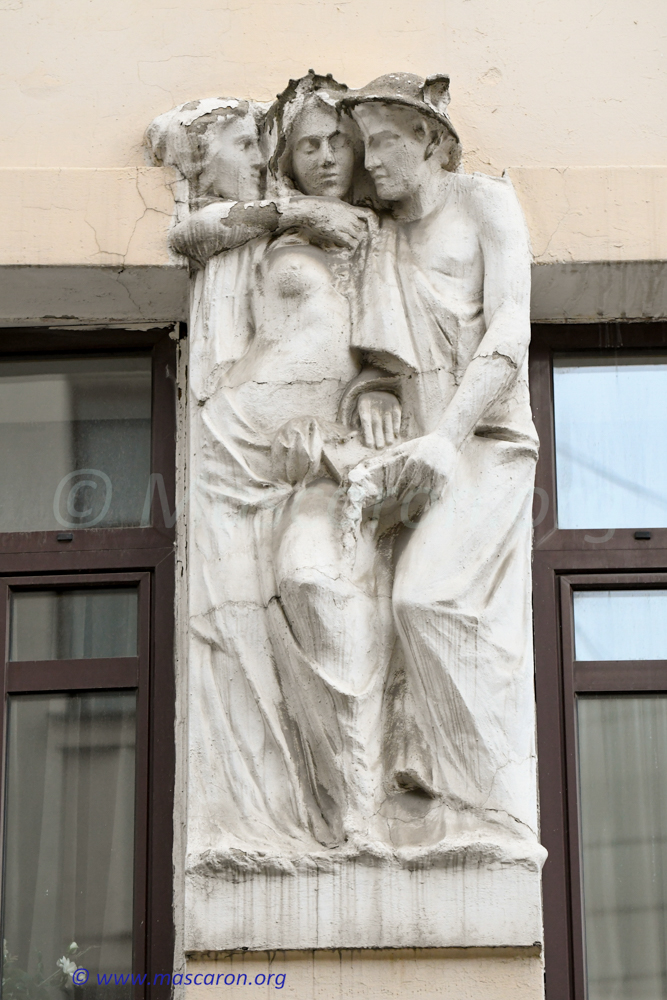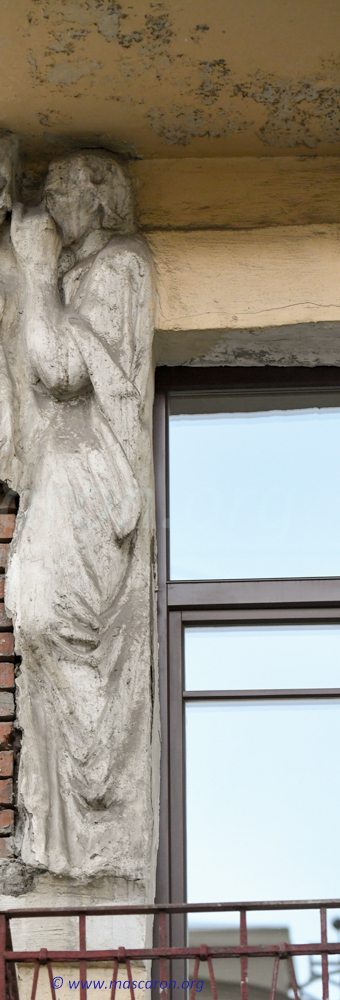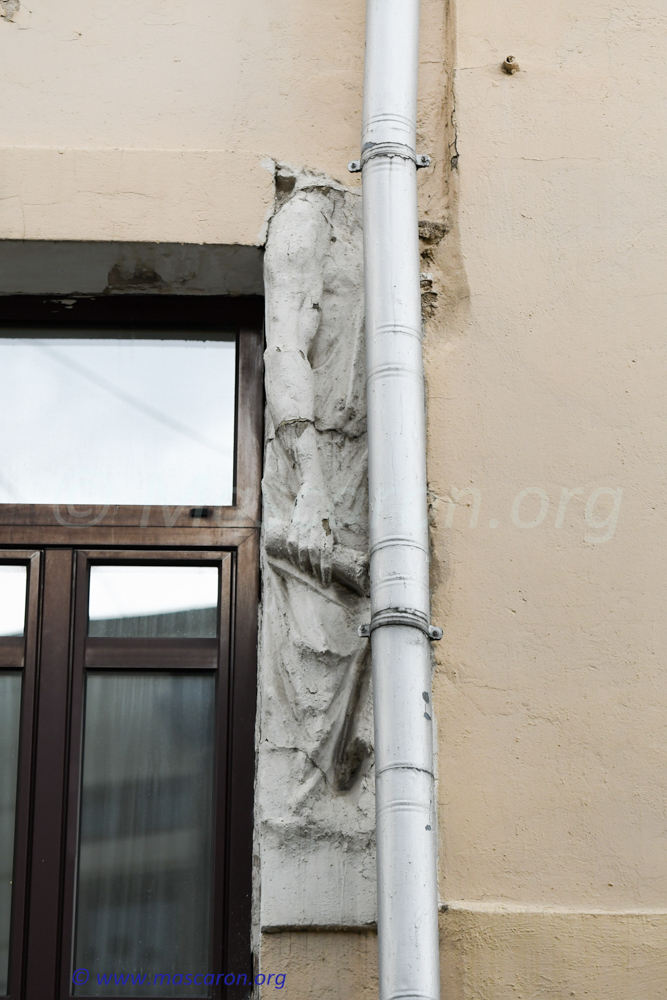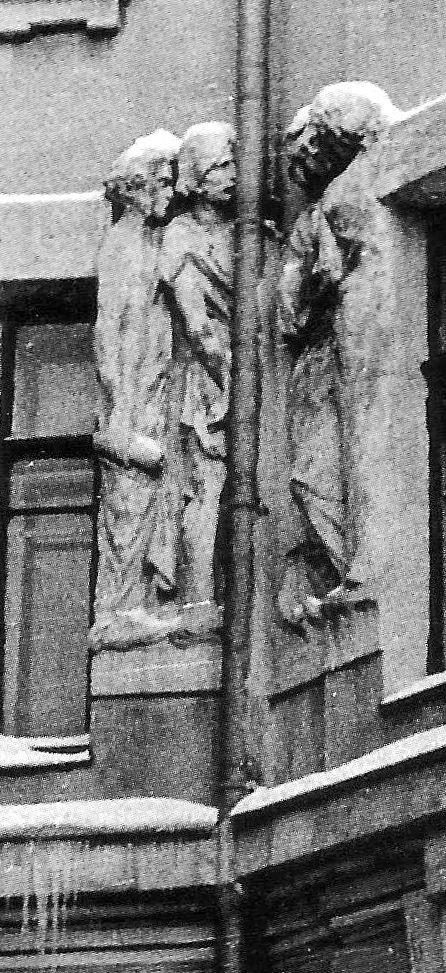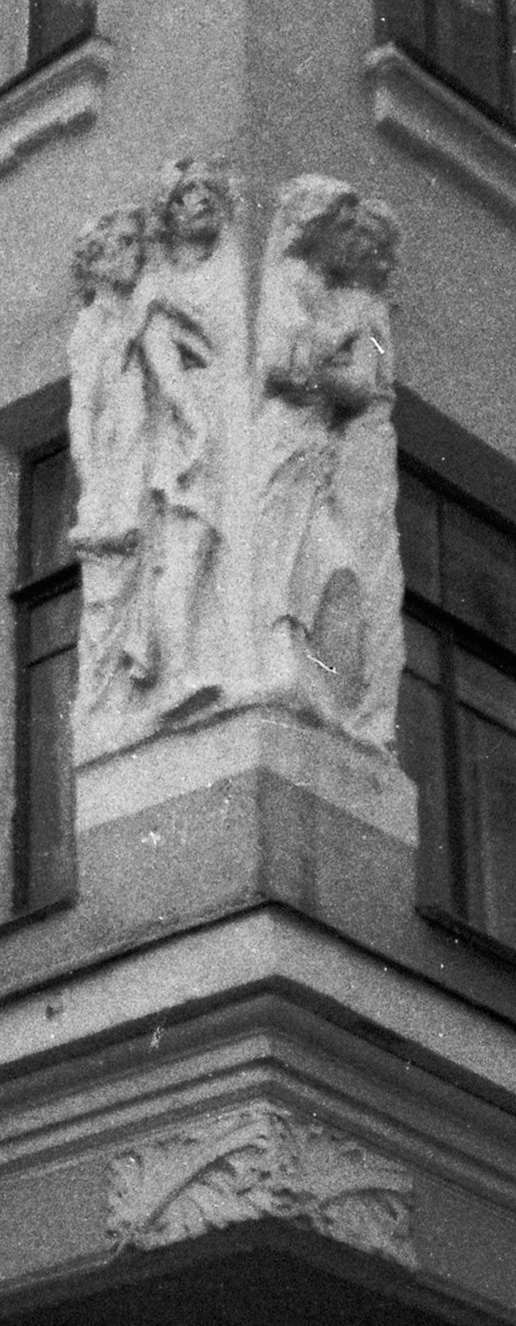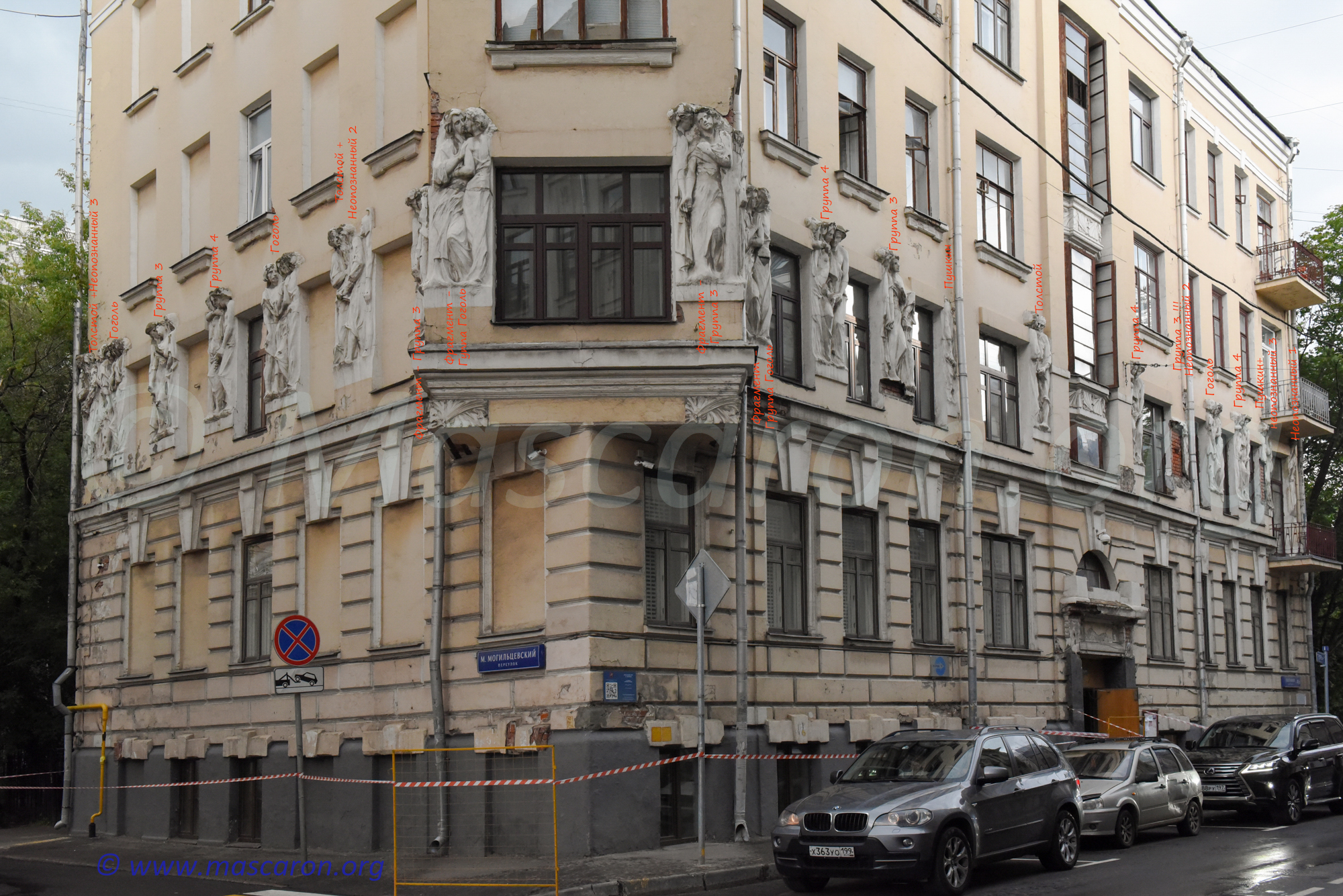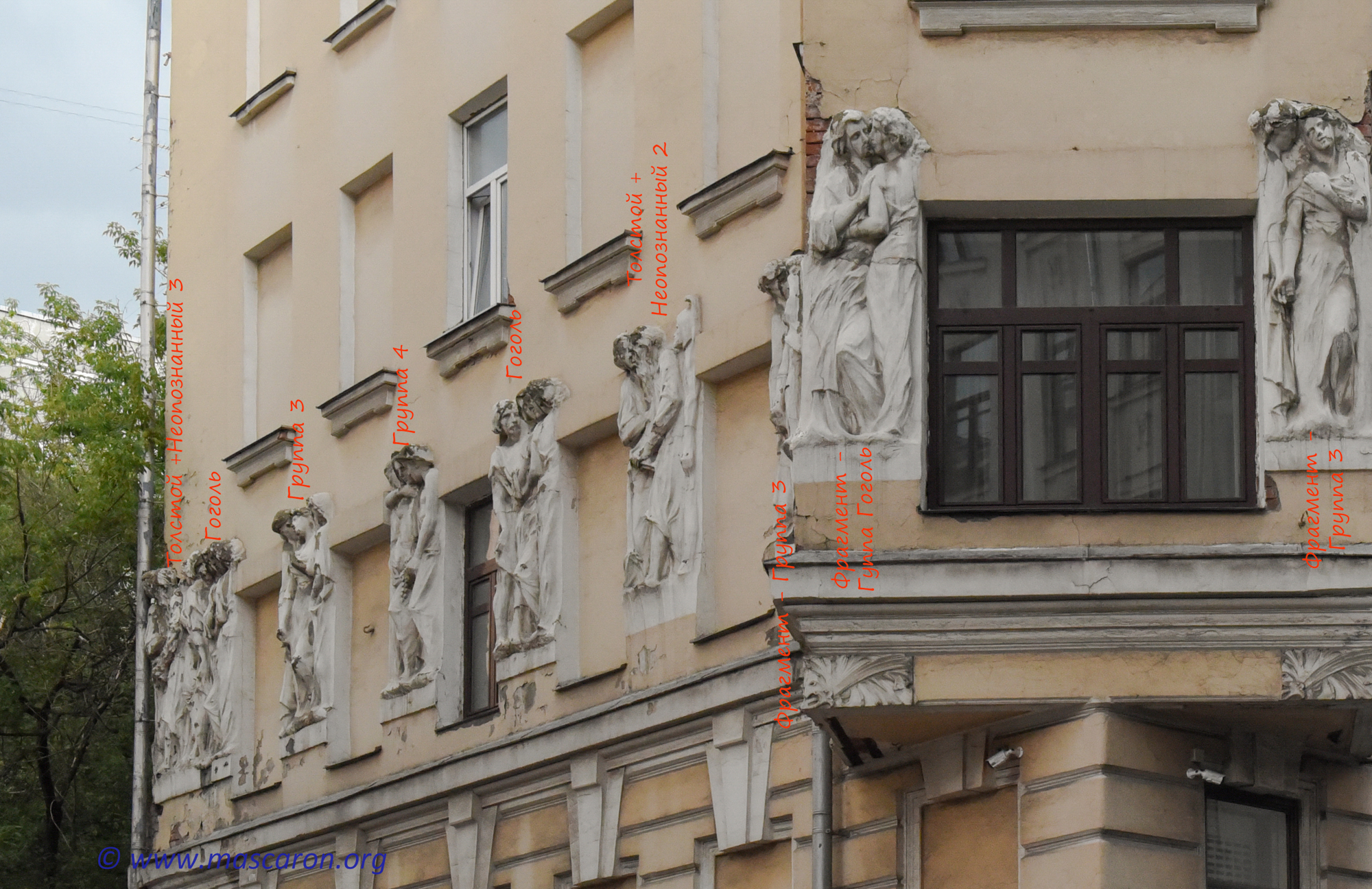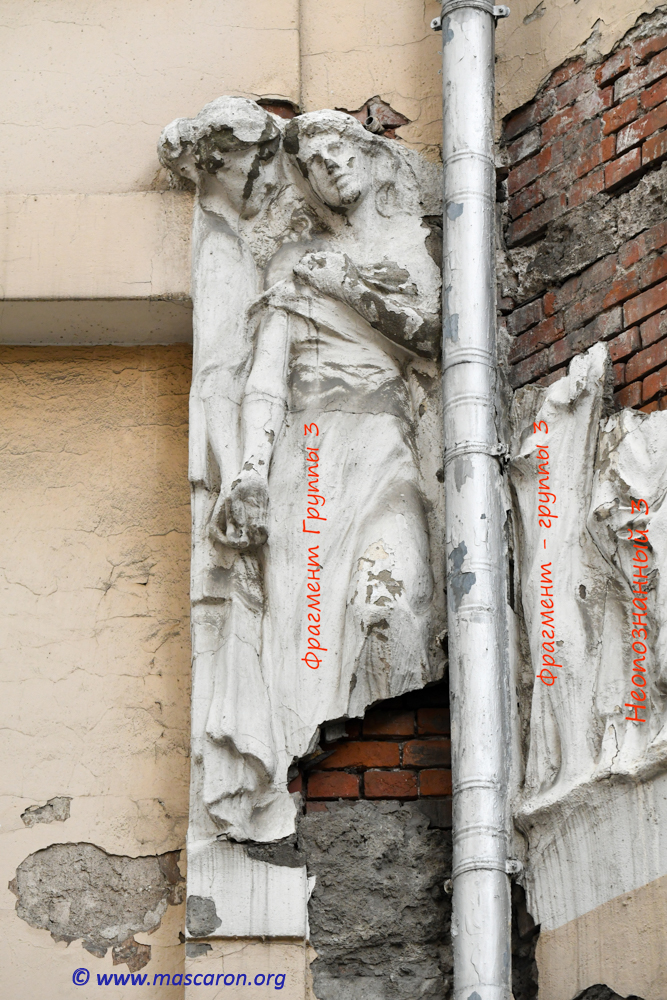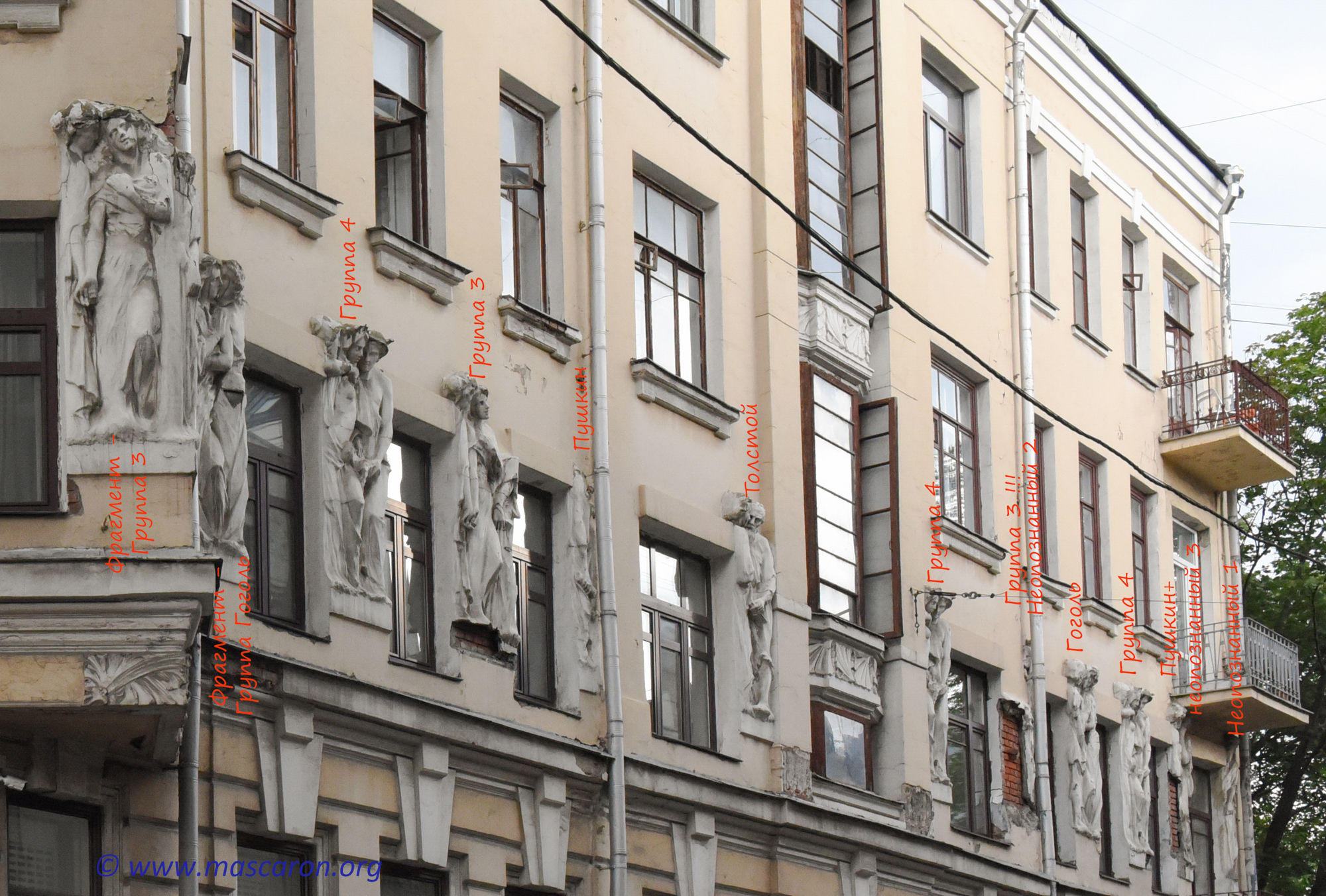And was there … Gogol?
(Or the «magic» power of the Internet: how rumors are born!)
Instead of an epigraph
«For the crashed Gogol will be punished with a large fine»
Title of the reportage of the program «Vesti» from July 25, 2017
In this, in 2017, «there is an excuse» to celebrate the anniversary — 110 years of an amazing building in Moscow! Decent age! And it would be fair to recall his story, not to mention bringing the building into a decent kind!
In 1907 architect Nikolai Ivanovich Zherikhov built another one profitable house for the adviser of justice, the candidate of commerce (a sign for the distinguished graduates of the Academy of Commercial Sciences) Herman Efimovich Broydo. at the corner of Maly Mogiltsevsky and Plotnikov alleys
The cooperation of the entrepreneur, builder Herman Broydo and architect Nikolai Zherikhov began in 1902. Their first joint project is an apartment house on Ostozhenka st. 20, adorned with a stucco decoration pretty rare for Moscow. On the frieze is built a whole zoomorphic composition, on which there are also «seagulls», «mountain goats» and a diverse flora. http://mascaron.org/?pid=1327
But it so happened that for many decades, when they talk about the Broydo building or about the architect Zherikhov, they remember, first of all, the house in Arbat — on the corner of Maly Mogiltsevsky and Plotnikov alleys. What else, besides a kind of angular bay window, makes this building so remarkable. Here, as writes about this house Wikipedia «The house is decorated with dozens of figures in human growth, in erotic scenes. In the guises of some satyrs Gogol, Pushkin and Leo Tolstoy are guessed. The sculptor is unknown.» (On the website of the project, photos are posted to two addresses — Maly Mogiltsevsky Lane — photos of 2014, but Plotnikov Lane — photos of 2017)
Indeed, this sculptural frieze is difficult not to notice, and if you carefully consider the sculptural groups, then really still and now could be clearly recognized Leo Tolstoy and Nikolai Vasilyevich Gogol in the «company» with the young ladies.
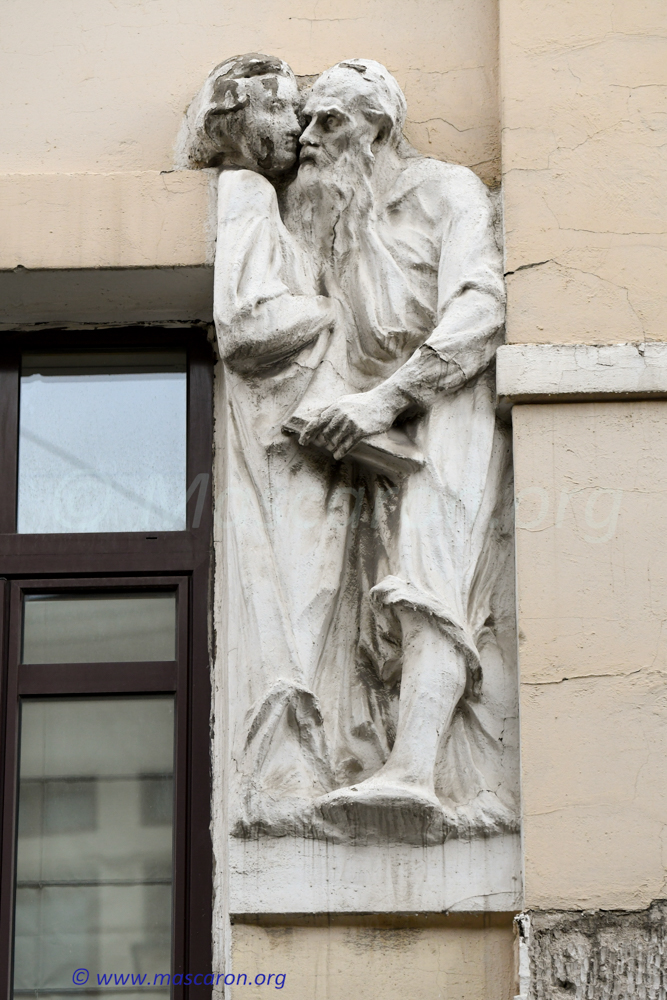 |
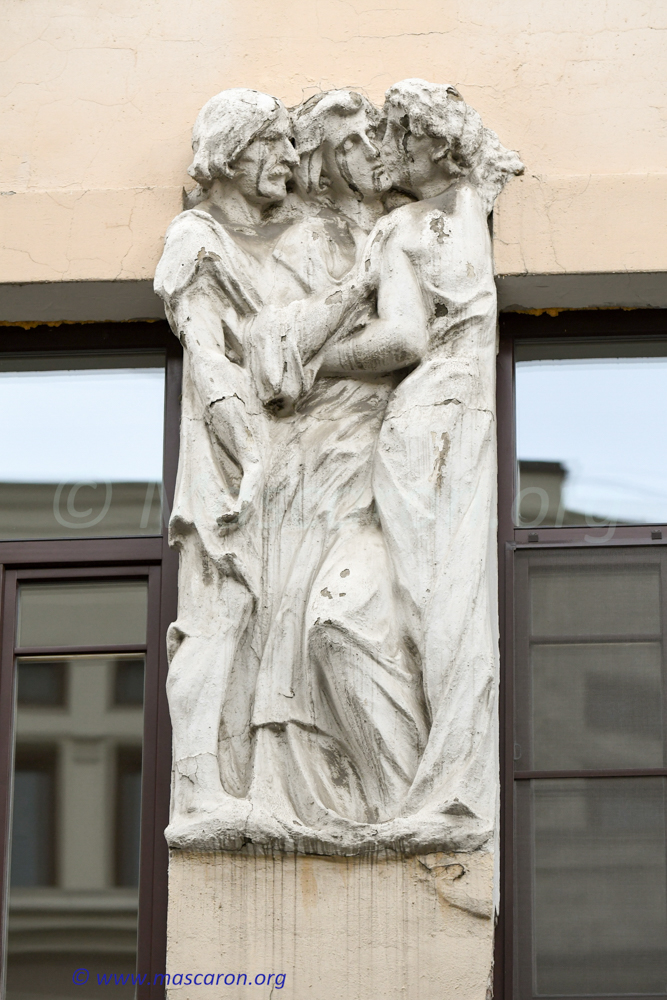 |
Many people still manage to distinguish also Alexander Sergeevich Puskin. Indeed, the image of Pushkin could be found at the end of the last century on the bay window (on its side walls), see more slightly lower. But now the state of the frieze has deteriorated catastrophically, there are a lot of losses, and some effort must be made to find Pushkin.
As a rule, the presence of great writers (and other prominent figures) is marked by memorial plaques on the facades of buildings, but like that, in such frivolous «stories» — this is something new, and certainly causing many questions and, at least, surprise. And, of course, such a unique «phenomenon to the people» of the classics could not but remain without attempts to explain it.
The most widespread and repeatedly replicated on the Internet and in literature, and practically on all excursions the legend is connected with the Museum of Fine Arts named after Alexander III (now the Pushkin Museum of Fine Arts). Allegedly a frieze prepared by the sculptor Sinaev-Bernstein for the Museum of Fine Arts — note that it was a competitive selection (bid procedure) — did not pass this tender, and was partially used on the facades of the Broydo profitable house
A fascinating legend, but only … . a legend, which has not any documentary confirmation. But it is how beautiful! Here is Pushkin Museum, and who does not know it then !, and besides the honor of the great writers is not confounded! And besides, «torment oneself» with doubts and trouble yourself with searching for the truth is not necessary — and so you can gather tourists! And the question about the primary sources — the answer is surprisingly simple: yes, «rummage» on the Internet, there you can find everything about it! Oh, this internet, just below will be a little «research» of the speed of distribution of such inaccurate information.
And what do the documents on competitive selection «about the decoration of the central portico of the Museum building with sculptural relief» ((I.V. Tsvetaev, Speech and Report, Read in the Ceremonial Meeting of the Imperial University of Moscow on January 12, 1903. Moscow, 1903. pp. 284-285.)) say?
First of all, it is necessary to thank for the rendered consultation, and to pay tribute to the Museum for its careful attitude to history. So in 2008 the museum prepared a 4-volume edition of the correspondence of I.V. Tsvetaev — Yu.S. Nechaev-Maltsov. Yuri Stepanovich Nechaev-Maltsov, Russian diplomat and factory owner — the owner of glass factories, actually financed the construction of the Museum!November 7, 1901, Tsvetaeva wrote Nechaev-Maltsov: «Arrived here from Paris, the sculptor Berenshtein, worked sketches of the upper cornice. The sketch in the drawing, made in two tones of pencils, is large in size. Yesterday evening, we had three, Klein, the sculptor and myself, in reviewing this experience. The artist is a man who is certainly gifted, able to search in the history of art and subjects, and forms. The center of composition is Parnassus with Apollo; To him are sent from that and on the other side of the figure of artists of all time. » And further, briefly describing the sketch, Tsvetaev writes: «On the one hand, the ancient world must begin to occupy place, beginning with Egypt and Babylonia, on the other — the Christian world, so that this frieze expresses the content of the Museum. There are also technical flaws: the right side of the viewer is not filled in enough closely, the voids between the figures and the groups require a different distribution. The artist is waiting for your arrival, your instructions, so that you can immediately begin the alteration. In the department of Christian art, apparently, it is necessary to exclude clerics from the company of Donatello, Michelangelo, Raphael and others, because the cassocks and hoods do not go to this procession of graduate students * to the glory given on Parnassus. The artist did not set them. The idea is, because it is given by you; The ways of composition are outlined, it remains, if your impression is in favor of the abilities of the sculptor, to him to rework [it] in the sense of greater certainty of the plot in each part, in every detail. »
In the context of the history of the frieze at the Broydo building, first of all, the fact that Sinaev-Bernstein in November 1901 only worked out sketches «in the drawing, made in two tones of pencils, large in size» attracts attention. In addition, if «cassocks and hoods do not correspond to this procession,» could the ladies accompanying other representatives of the Christian world, like ladies on the Broydo House frieze, correspond to this procession? It’s hard to imagine this! With such attention of customers to details, this «plot», most likely, would be noted.
Continuing work on the project, in May 1902 Sinaev-Bernstein showed Polenov a sketch (again, only a sketch!) of the updated version, which Polenov responded well. And that’s what follows from the documents. In March 1902, Tsvetaev wrote to Nechaev-Maltsov: «With Sinaev-Berenshtein it seems that I must part, instead of the 60,000 francs he spoke about in Moscow, he asks for 75,000 rubles for stucco work and 50,000 for cutting, although he agrees , Apparently, to do both work for 110 K. Rubbles. » Note that the cost of work on the creation of the Parthenon frieze (behind the colonnade of the main facade of the Museum) already in stone! cost was 17,000 rubles.
The contest was held in July 1902. There are mentions that Sinaev-Bernstein presented «a large-scale sketch made with ink.» And here is how the results of the competition were presented in the report of the Committee (on the construction of the Museum) for 1902: «The question of decorating the central portico of the building of the Museum with a sculptural relief was discussed at the meetings of the Committee for the Construction of the Museum Emperor Alexander III at the Moscow University in 1902, when the building of the Museum was brought to the roof and began to produce columns and half-columns for the facades. During 1902, Yu.S.Nechaev-Maltsov, a comrade of the Chairman of the Committee, whose resources were supposed to carry out the work, presented sketch designs of 3 authors: the Roman sculptor Romanelli (the wedding of the Emperor Alexander III as the patron of arts and sciences), Sinaev-Bernstein (Parnassus and Apollo sitting there among the muses who give out the wreaths of Glory to artists of all ages and peoples, not only to painters, sculptors and architects, but also to artists of words) and Zaleman (Olympic Games). »
As a result, Zaleman’s project was chosen, and the portico of the Museum is decorated with Zaleman’s frieze «Olympic Games». The frieze itself was carved out of Carrara marble by the pupil of Zaleman, the Odessa sculptor Joseph Ivanovich Mormon.
Analyzing the above documents, let us note once again: there is not the slightest mention of any molded forms, and, especially, about the mock-up models and their casts made by Sinaev-Bernshtein! The Sinaev-Bernstein project, both in 1901 and in 1902, is mentioned only as a pencil sketch, or as a sketch in ink.
Further from the description of the project it follows that we are talking about a composition in which «directed (to Appolon) on this and the other side of the figure of artists of all time.» And the muses who «give out the wreaths of Glory» hardly hug each other on this occasion, as it can be seen at the Broydo House.
Thus, with a sufficient degree of confidence based on the available documentary sources, it can be argued that the most cited version of the origin of the frieze at the Broydo building is at least is not justified. In addition, Zherikhov built a profitable house in the Arbat in 1907, and there were no evidence of warehousing of such enough large plaster figures (if any existed) for almost 5 years (or they could not be found).
In addition, it should not be forgotten that the sculptor Sinaev-Bernstein (Bernstein-Sinaeff L), born in Vilna, since 14 years, lived in Paris. Artistic education, including that of Auguste Rodin, he also received in Paris, where he completed all his famous works (before 1912), mentioning, in particular, the edition of the «Jewish Encyclopedia», Publisher: Tip. Acc. General. Brockhaus-Efron. — St. Petersburg, 1906-1913. In 1901 he became Knight of the Order of the Legion of Honor, In 1944, in Paris, he was arrested by the Nazi authorities and died in the same 1944 in the camp of Drancy.
As if it did not be wanted to, but most likely the authors of numerous of publications, interviews, and TV reports will have to make appropriate adjustments — the Museum of Fine Arts (now the Pushkin State Museum of Fine Art) has no direct relationship to the Building of Broydo The friezes placed on its facades did not seem to be the sculptured by Sinaev-Bernstein for the competition in the Museum, and accordingly, there was simply nothing to transfer to the facade of any house!
There is a second version of the origin of the frieze on the front of the Broydo building, and it is connected with the alleged «home of tolerance». Funny version, if you recall the dates of the life of even the same Nikolai Vasilyevich Gogol — 1809-1852, and Pushkin — 1799 — 1837, And the building that was built only in 1907. Lev Nikolaevich Tolstoy is the only candidate for visiting Brody’s house, although in 1907 he was already 79 years old. Of course, anything could be in this place and before the construction of this house by Zherikhov. There are known areas, in particular, Sretensky lanes where there were brothels, In Moscow but the Arbat part has not been thoroughly studied in this matter so far, and is waiting for its researchers. So, until the Moscow address books and other sources are studied, neither to exclude nor to accept such a version is surely no reason. Although there are more doubts about the version which are based on the dating. Well, if, «something was,» then the motivation of these frivolous compositions, and even with such participants, could be quite diverse.
Based on the available materials, we can confidently state:
- No documentary evidence of the origin of the mysterious frieze on the Broydo building was found.
- The version associated with the Pushkin Museum is almost certainly untenable: neither in the existing documents, nor in any of the memoirs of contemporaries, there are any references to the versions of the frieze made by Sinai-Bernstein for the Museum of Fine Arts “in the material” — only paper sketches.
- The version associated with the home of tolerance also does not yet find documentary evidence.
So it remains only to continue to seek an answer to this Moscow puzzle. And it is possible to find the very sketches of Sinaev-Bernstein, which he submitted for the competition and the Museum of Fine Arts.
The magic power of the Internet, or the speed of information dissemination.
In the meantime, the Broydo House itself continues to «please» the public with yet another unverified fiction. And the most remarkable thing is that even such «respected» channels as Culture, Russia (the «Vesti» program), no matter how shy, broadcast these fables.
So on the channel «Culture»: https://tvkultura.ru/article/show/article_id/183989/ In the transcription of the report, you can read:
«In Plotnikov Lane from this house fragments of stucco decoration regularly collapse. Three days ago, Nikolai Gogol collapsed, «said activist of the public movement» Arhnadzor «Nikita Inozemtsev.
Moskomnaslediye was saying to the residents of the house for the past three years that they themselves must carry out emergency response work. Gogol was to fall, so that the situation changed.
In the program «Vesty», broadcast on July 25, 2017 (14:40) http://www.vesti.ru/videos/show/vid/724274/cid/1/# At 2 minute 41 seconds the next story begins, which the announcer with a cheerful, confident voice called: «For Gogol will be punished by a large fine»
This story began on July 22 this year, 2017, when for the first time in the network there was information that from the facade of the Broydo building in Plotnikov Lane fell off …. Gogol. And, as they say, it raced … .. there is a hot news, there is a landmark name — Gogol …. it is clear — who will not pay attention !… and here is the result. In just 3 days, (even without attracting the paid bloggers ), this is not exactly accurate news (below it will be shown what is wrong), the federal channels are already replicating. It is wondered if it is possible after this to believe these channels in other news ?
So, what happened on July 22nd. From the facade of the Broydo building, the lower part of the sculptural group collapsed. This group had lost the top part for about 20 years.
Photo provided by the Public Movement «Arhnadzor»
And that’s what appeared to the public (see the following photo). But why the author of the very first online publication said that «Gogol fell» — a mystery. Maybe to «warm up» attention (after all, the classic disappeared! ), maybe without thinking … or just was too lazy to sort out … This is a mystery. But the fact is a fact — the news, albeit not quite accurate, was sold out. The most important thing is that according to the statement of the Department of Cultural Heritage, work will begin to preserve what is left, and, perhaps, to restore the lost one. It would be nice if not Gogol here restored by mistake
With all the seeming variety of figures on the facade of the Broydo building, the frieze of the facade consist of only a few repetitive groups and individual figures. There were also two more women’s masks (Athena Pallada?) above the front door in Plotnikov Lane. One, the left mask fell off in the late 90s, the second stayed until 2016.
Here is how this mask looked in July 2014:
At the moment, among the «characters» present on the facade, it is clearly possible to distinguish Lev Nikolaevich Tolstoy and Nikolai Vasilyevich Gogol. In addition, using the materials of photography of the 90s of the 20 century, it is possible to identify Pushkin (as described in more detail below).
Only 4 groups and 4 separated figures can be identified on the façade. These separated figures are present on the facade or independently, or complement these groups. (The missing masks of Athena are not considered)
The arrangement of groups and figures is shown in the general view of the house and separately on the side walls of the eraser.
 |
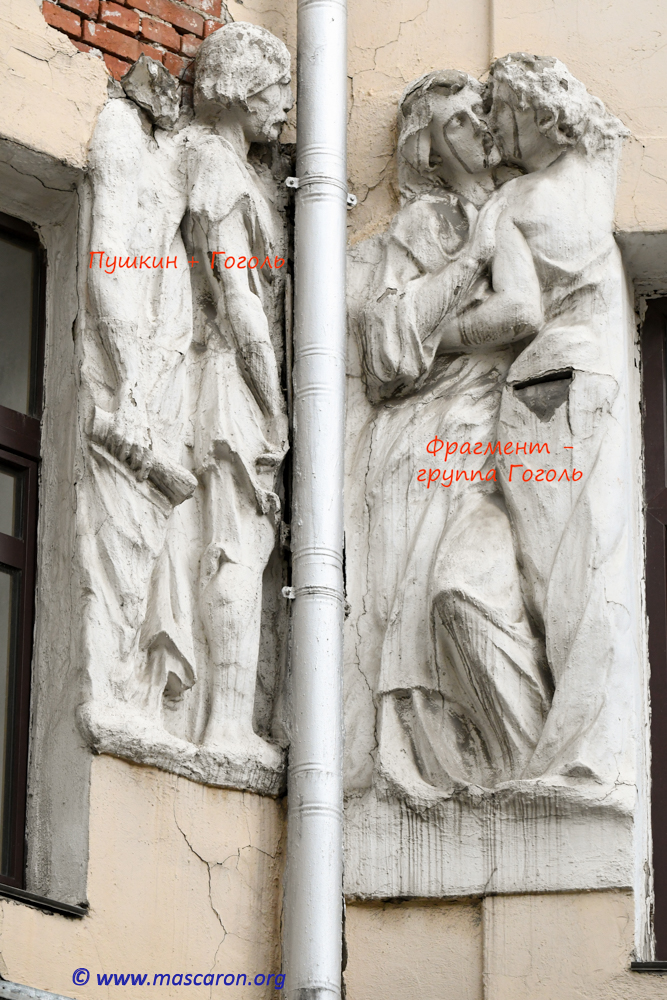 |
The above analysis of the structure of the frieze makes it easy to determine that the fragment of the sculptural composition that collapsed on July 22, 2017 is the lower part of Group 3. It suffices to compare the corresponding elements on these two fragments — on the collapsed and still preserved (Group 3).
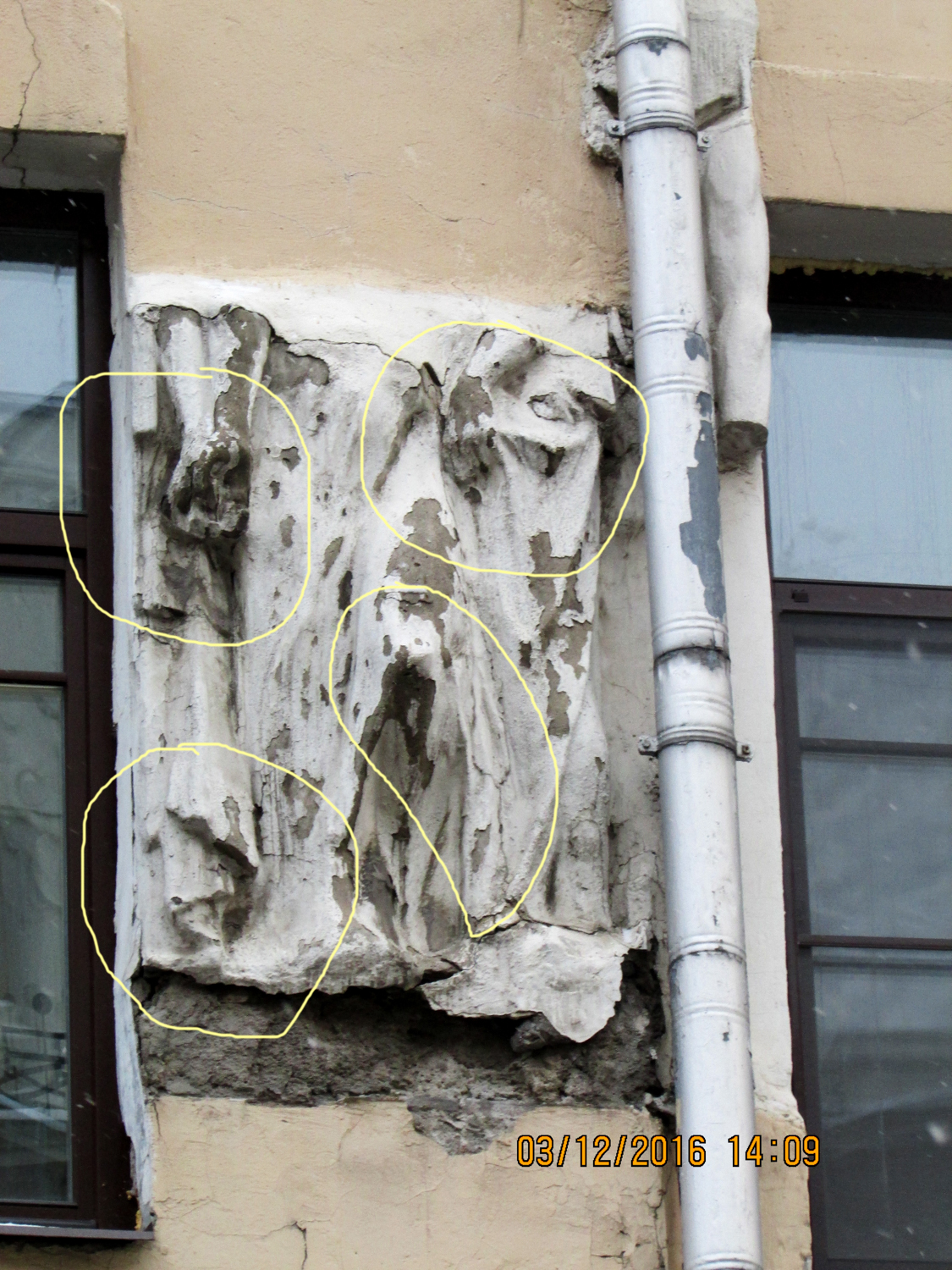 |
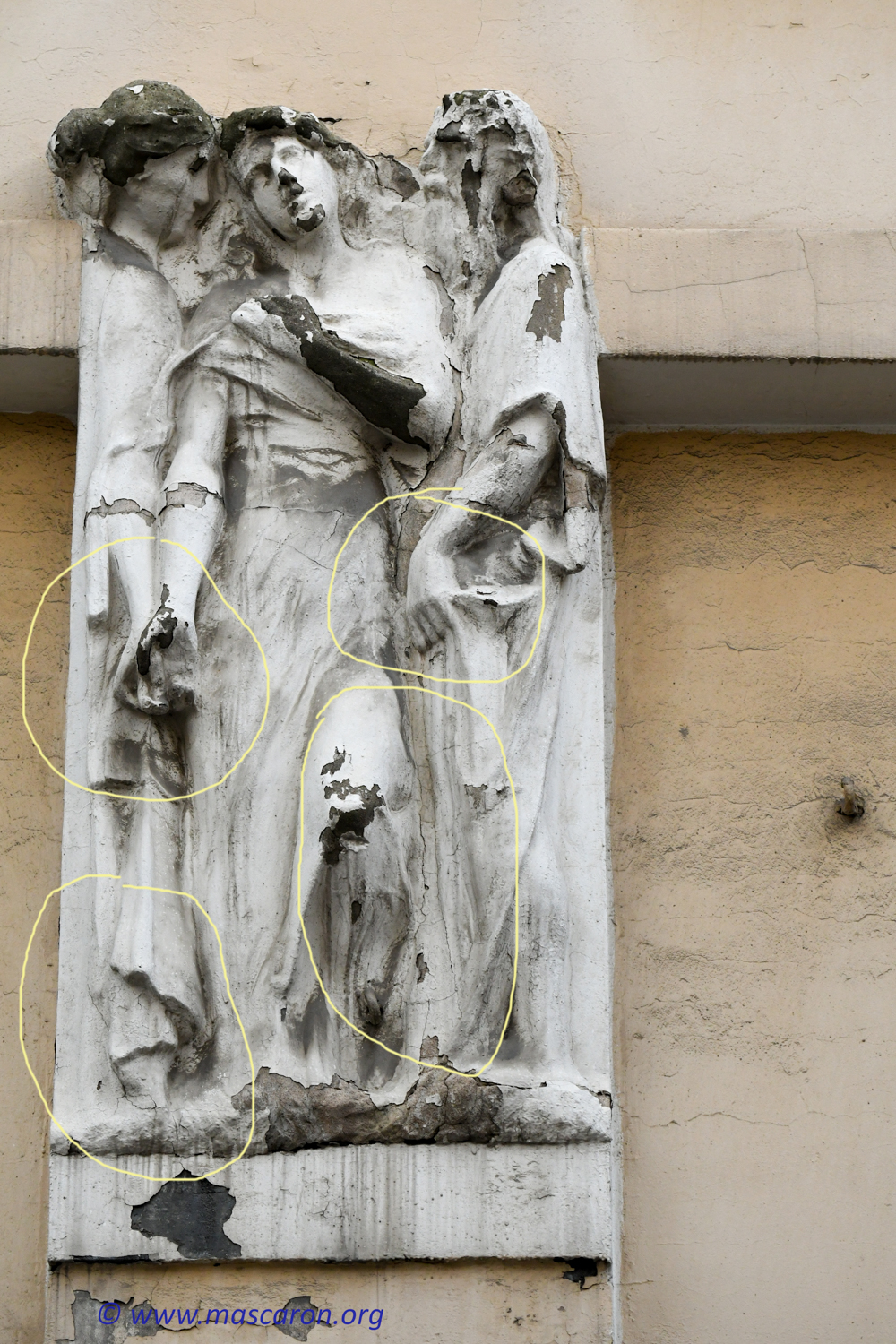 |
It can and should be confidently asserted: on July 22, 2017, the lower part of group 3 collapsed! Gogol (this time) fell on!
Thus, it would be correct that commentators and guides, however, not «confuse» readers and tourists, and do not bring new stories into the history of this wonderful house!
It remains to be decided, but what about Pushkin is now still left. For this, let us turn to the photographs of the frieze of the end of the 20 century. The corresponding fragments were used in the table above. Obviously (if the version is accepted, it is precisely Pushkin on these fragments) that the distinguishing feature is, in particular, the scroll he holds in his hand. It is quite clearly visible on the above fragments. It is on this scroll and, based on the above analysis of the structure of the construction of the frieze, you can find the surviving «remains» of the sculptural image of our great poet on the frieze of the Brody House. In the complete resolution of the general view of the house these fragments are noted.
Such a funny story takes place in the heart of Moscow. How it will develop the situation with the preservation of the remaining sculptural compositions is difficult to say — it’s not «My Street» (Moscow government project for road recovering for multi-multi billons rubles ), however!
So, maybe it makes sense not to be lazy and go to curiosity, until something does not fall off … from the front of the House of Broydo! Especially since it’s 110 years old!
